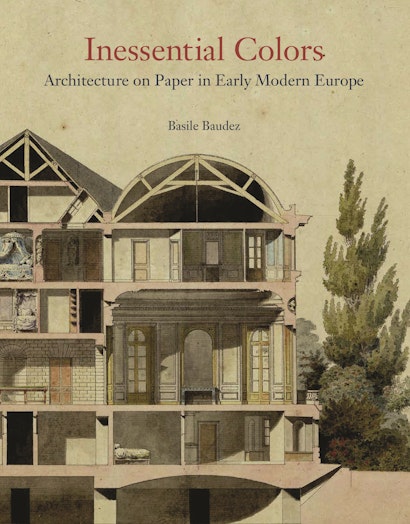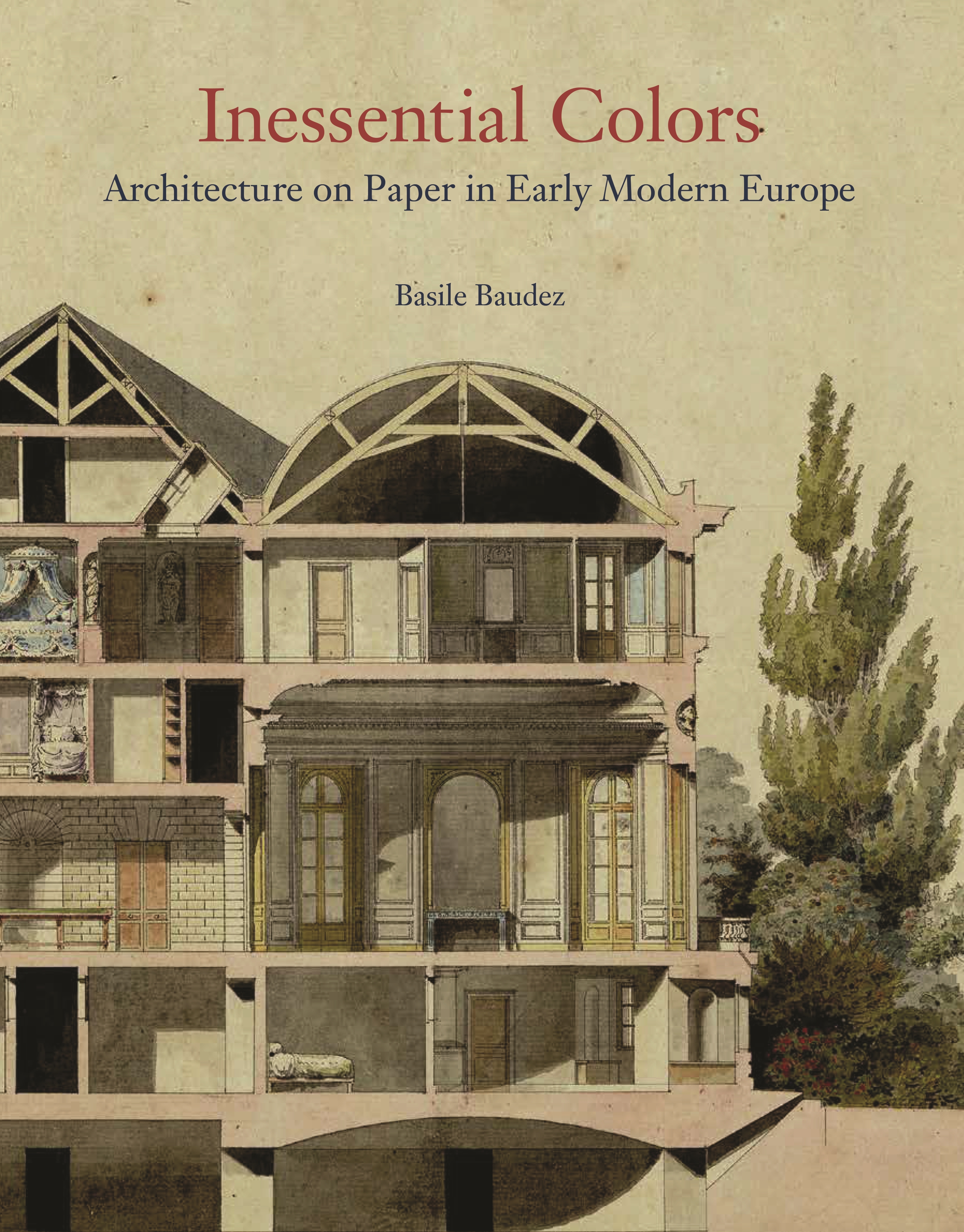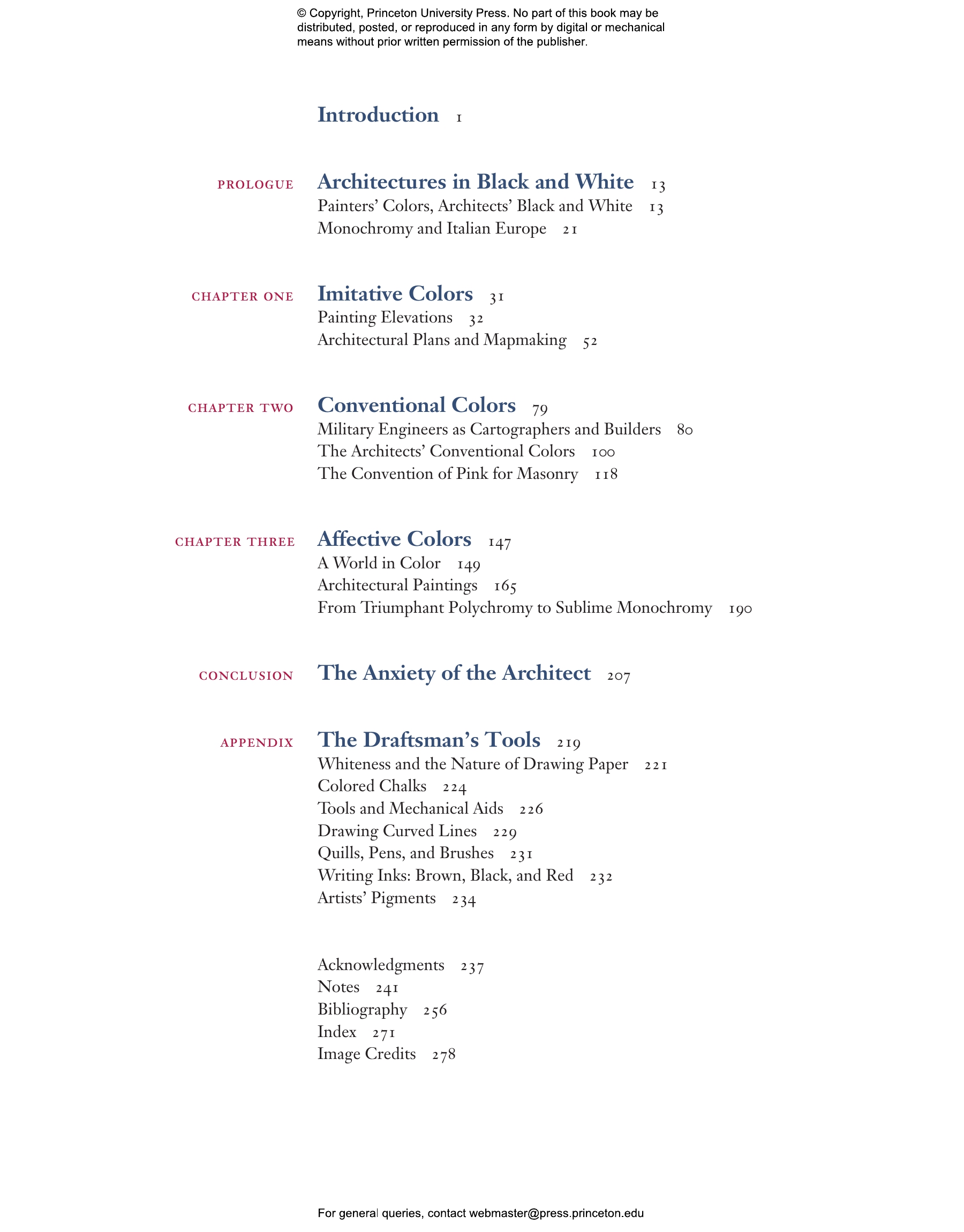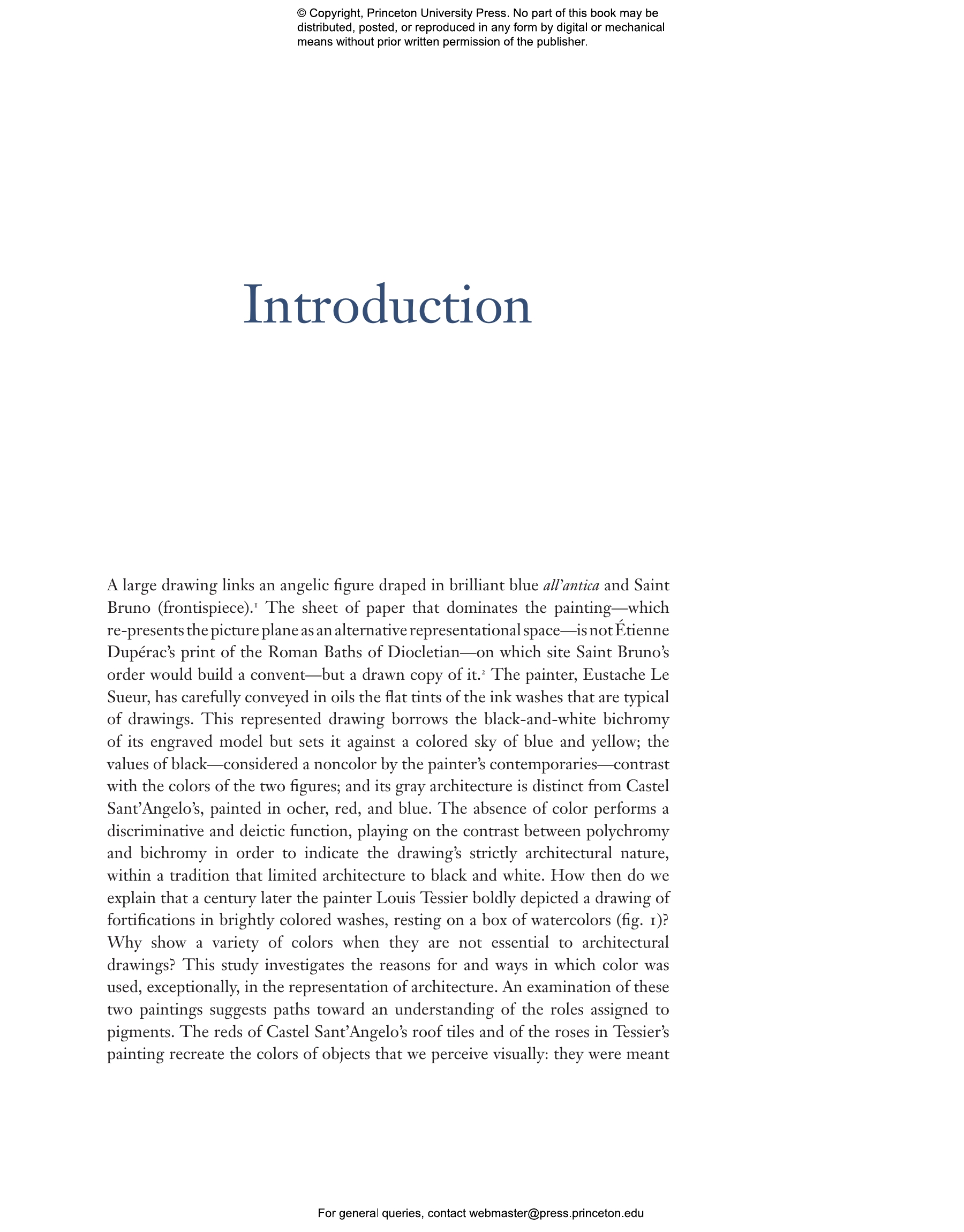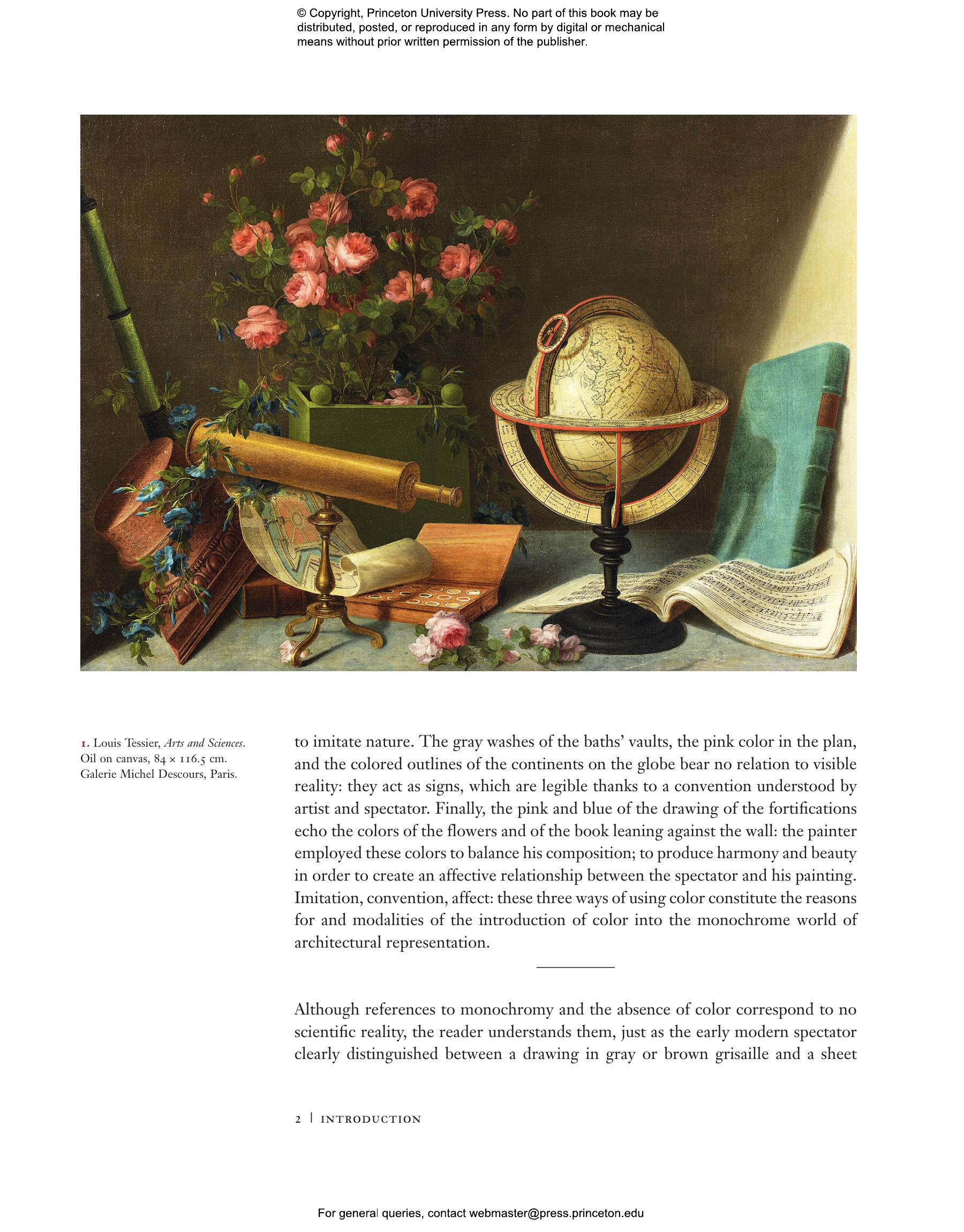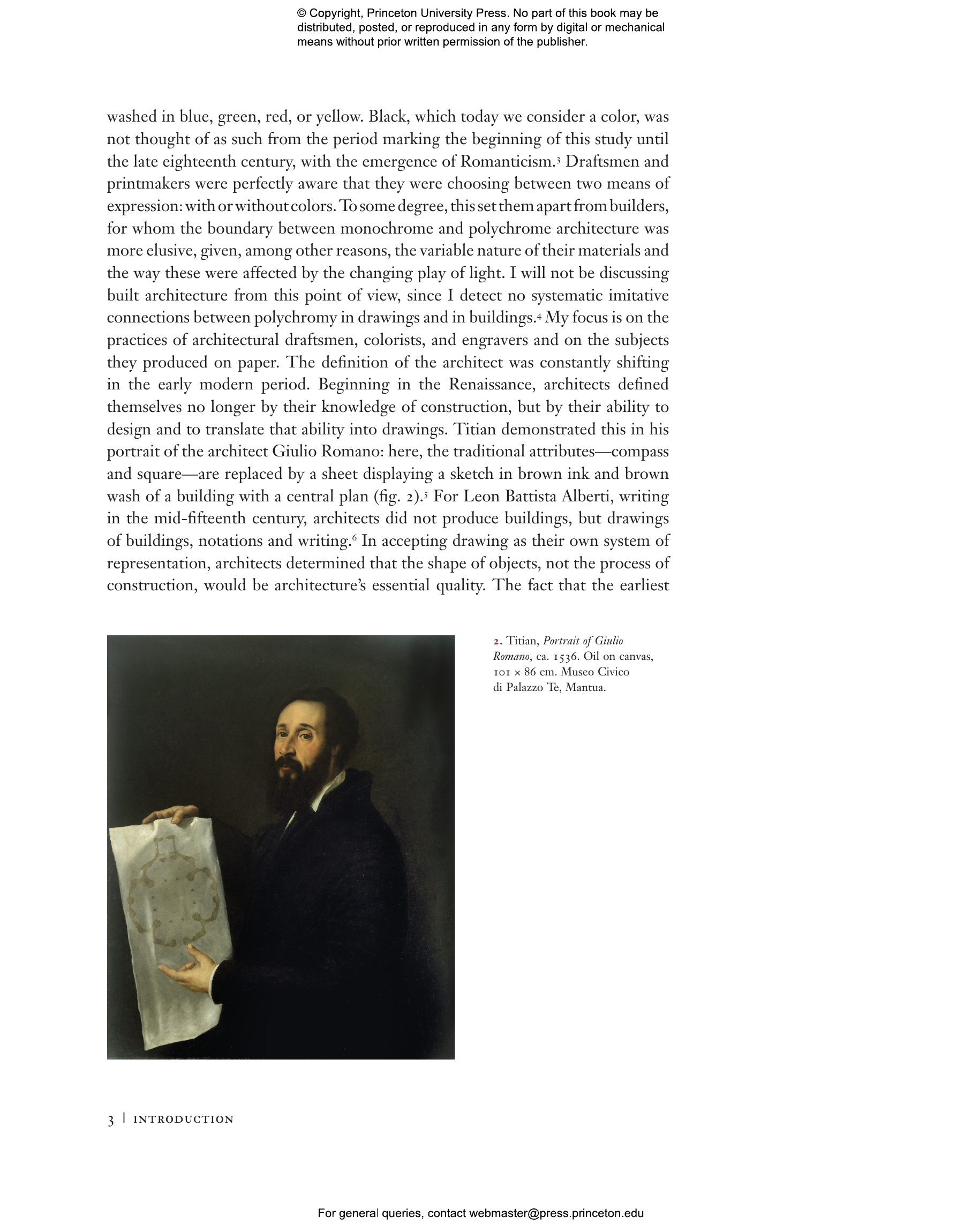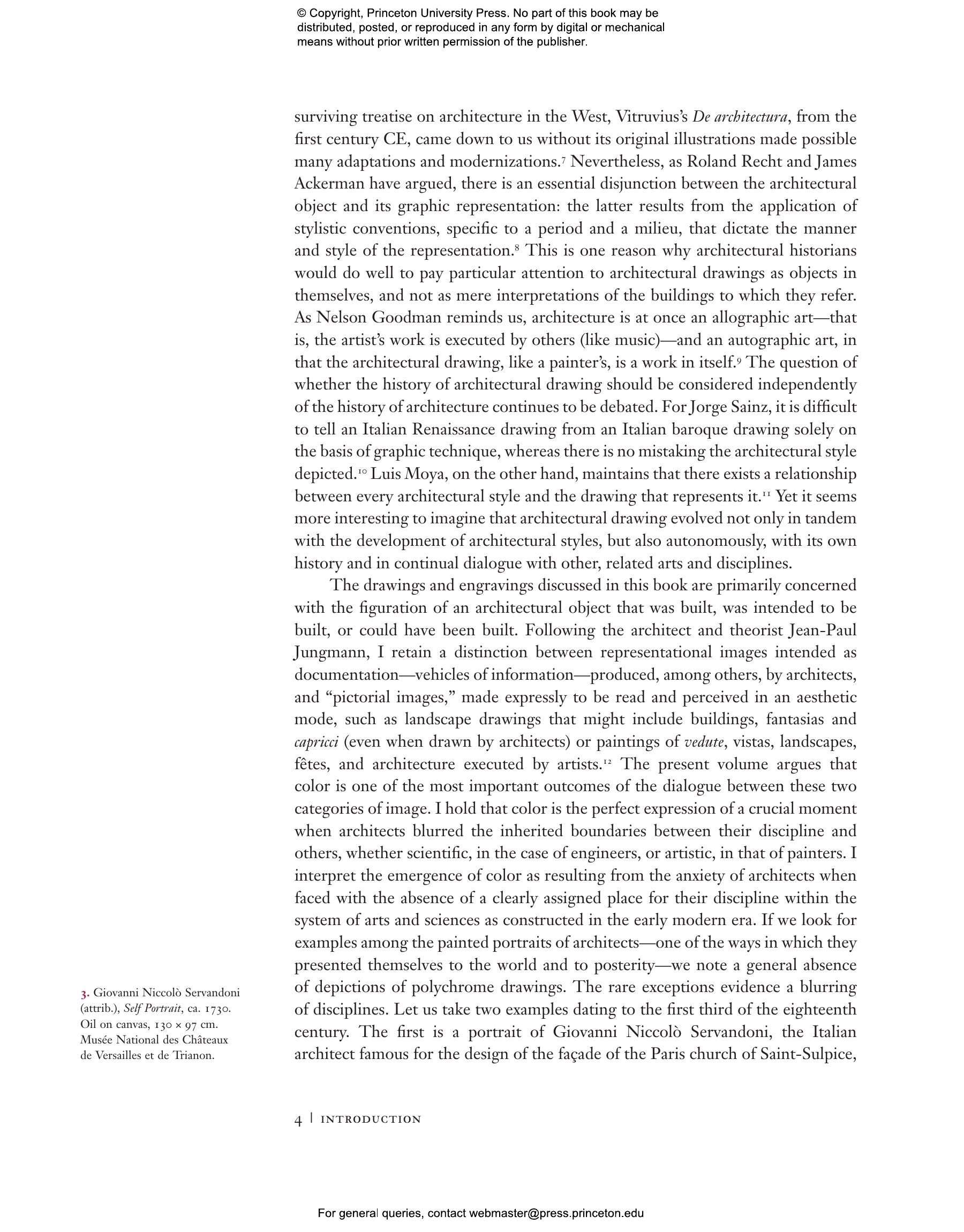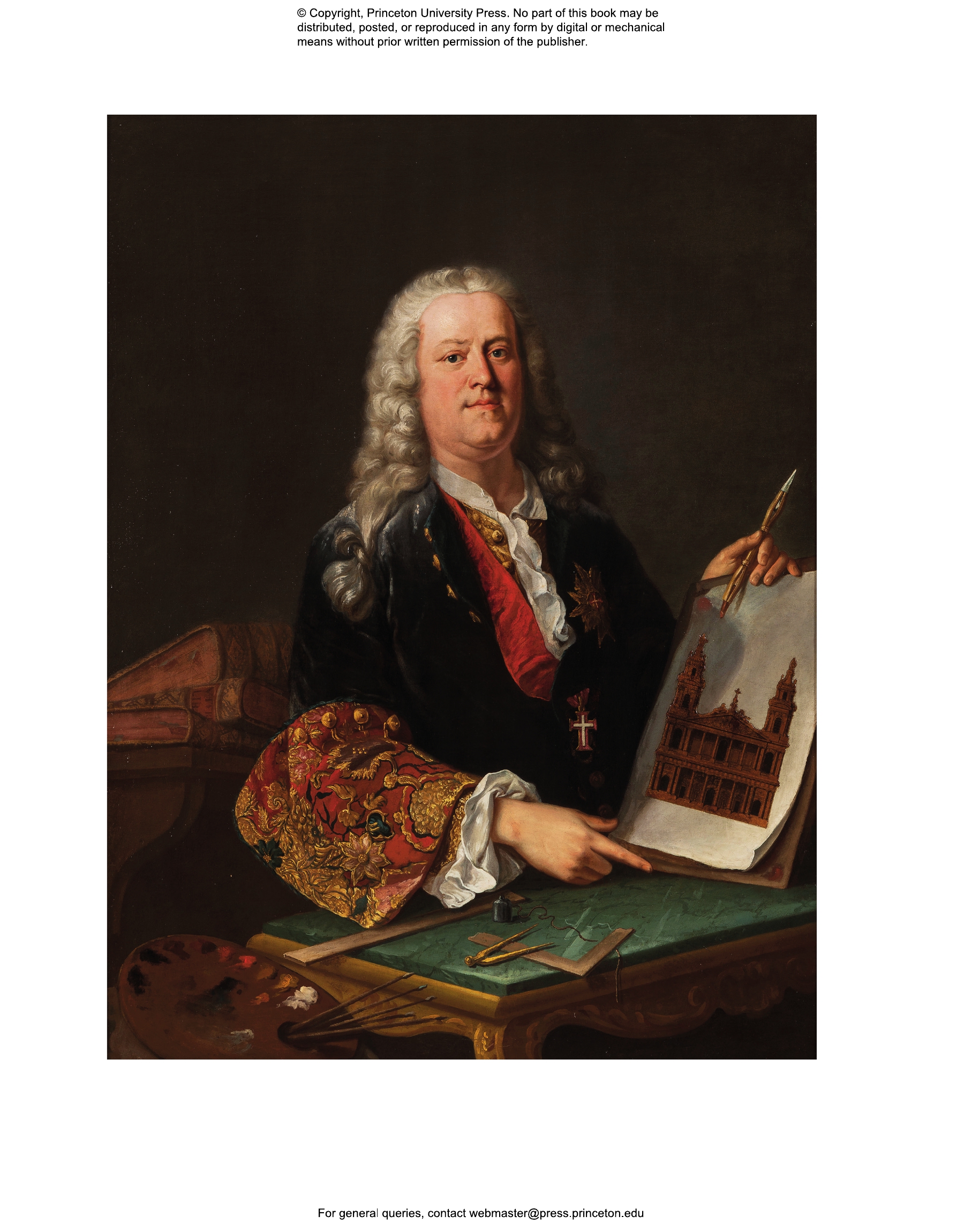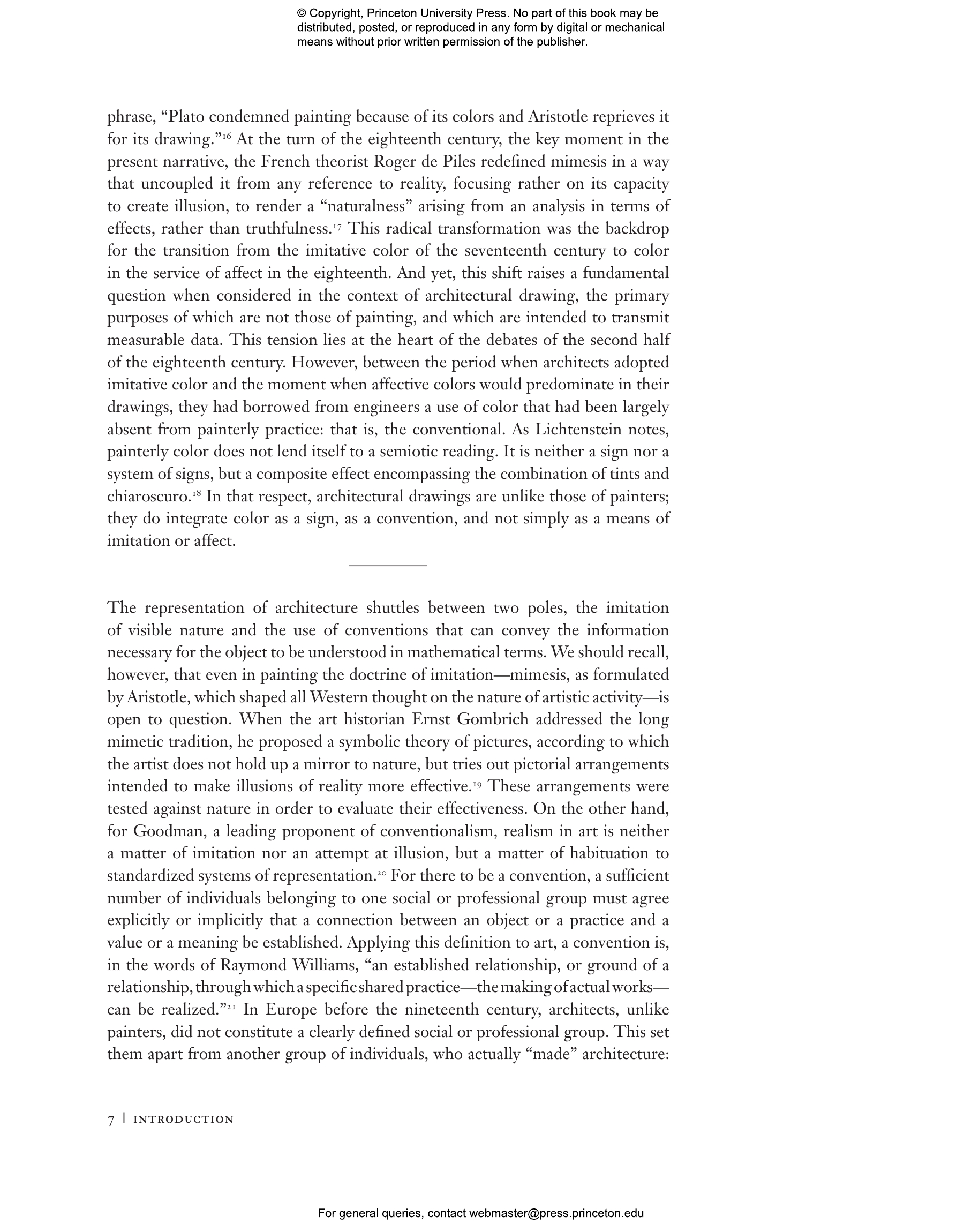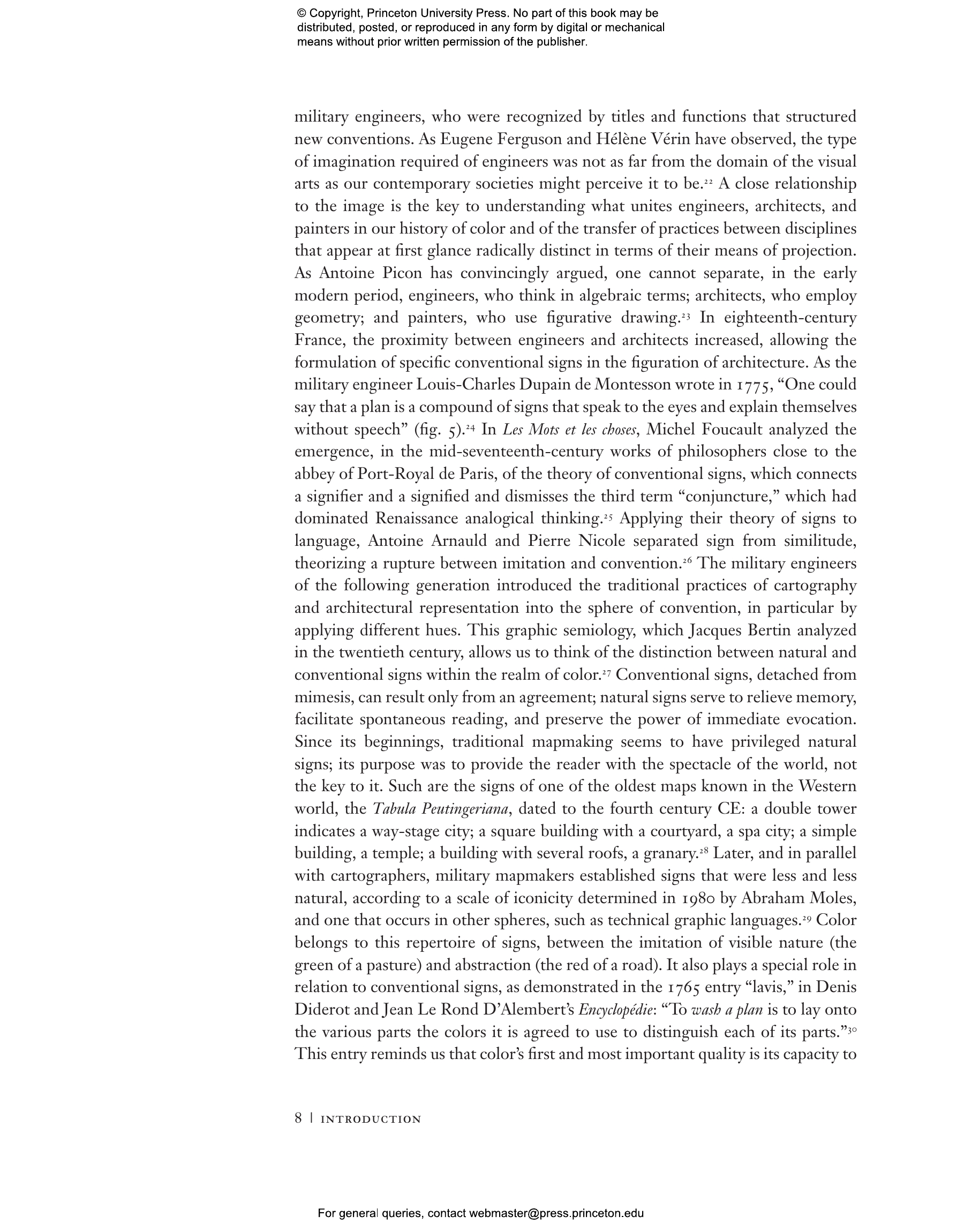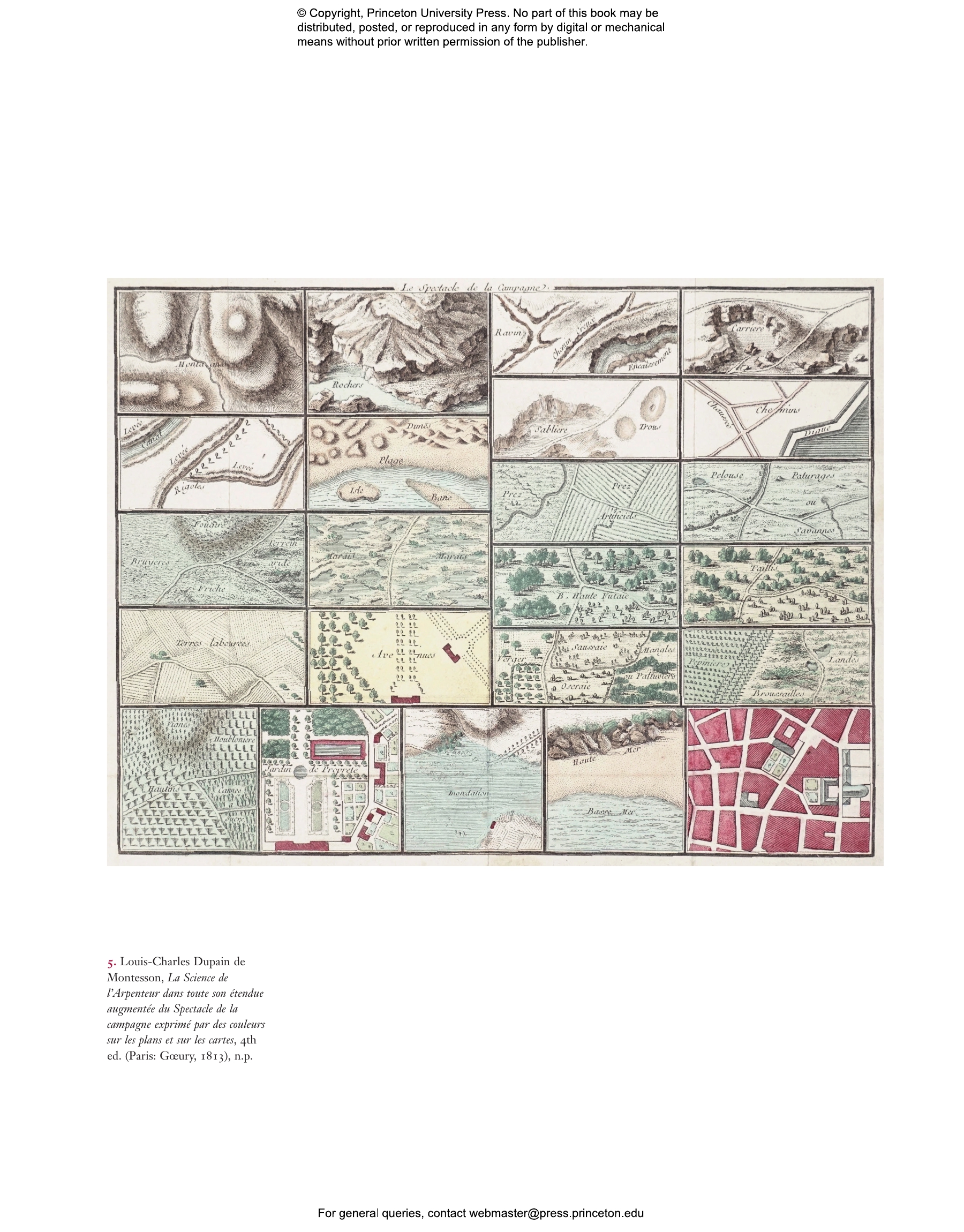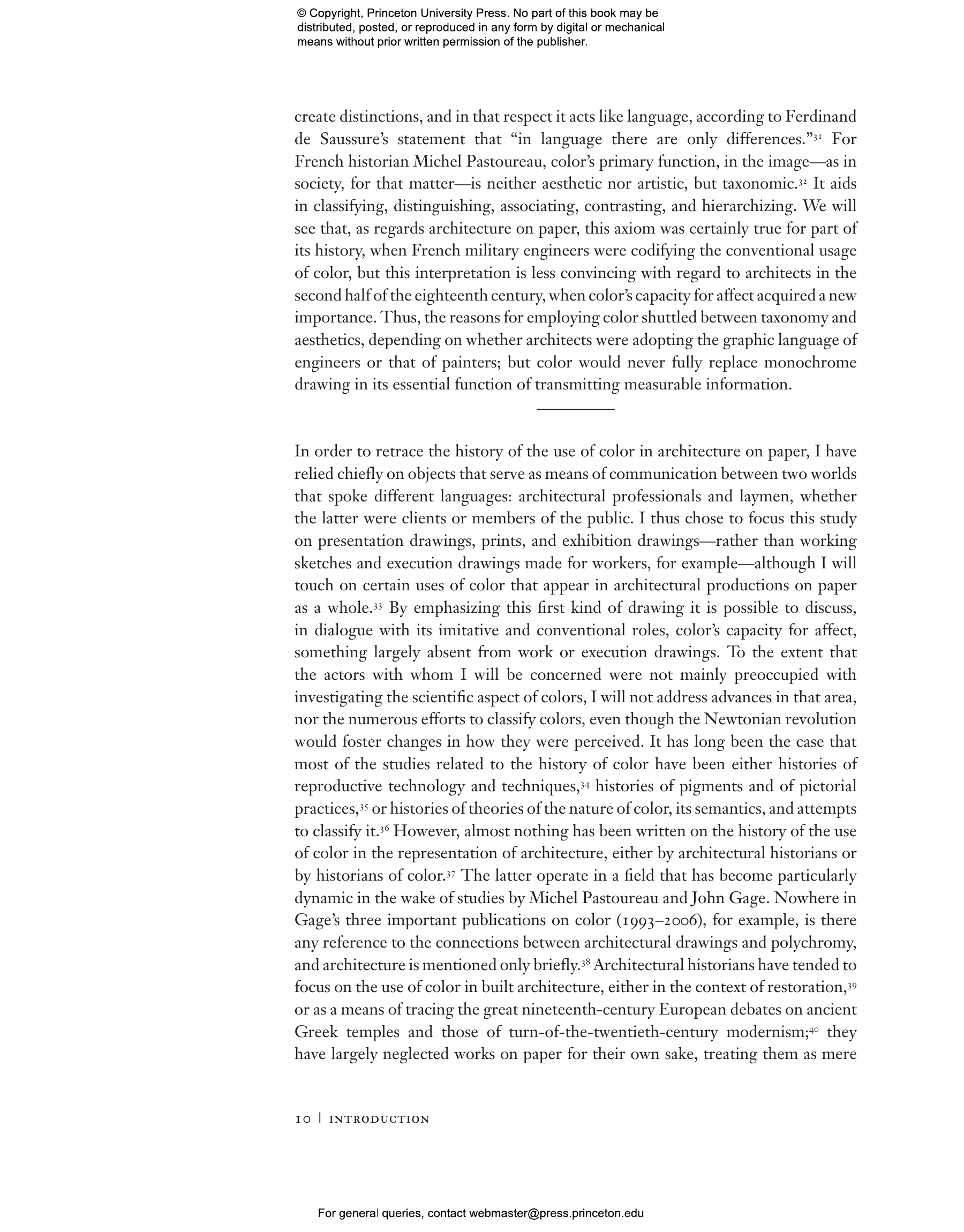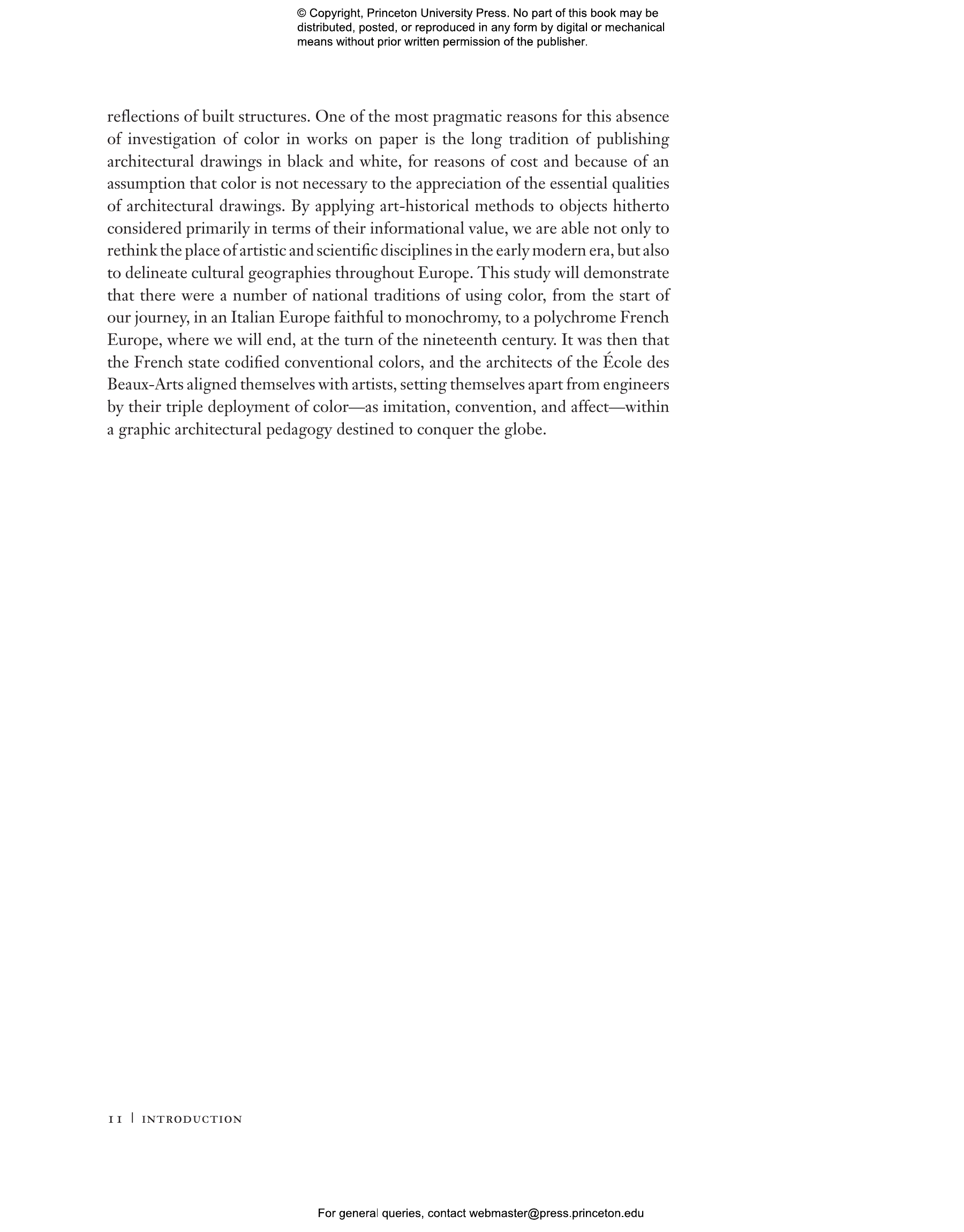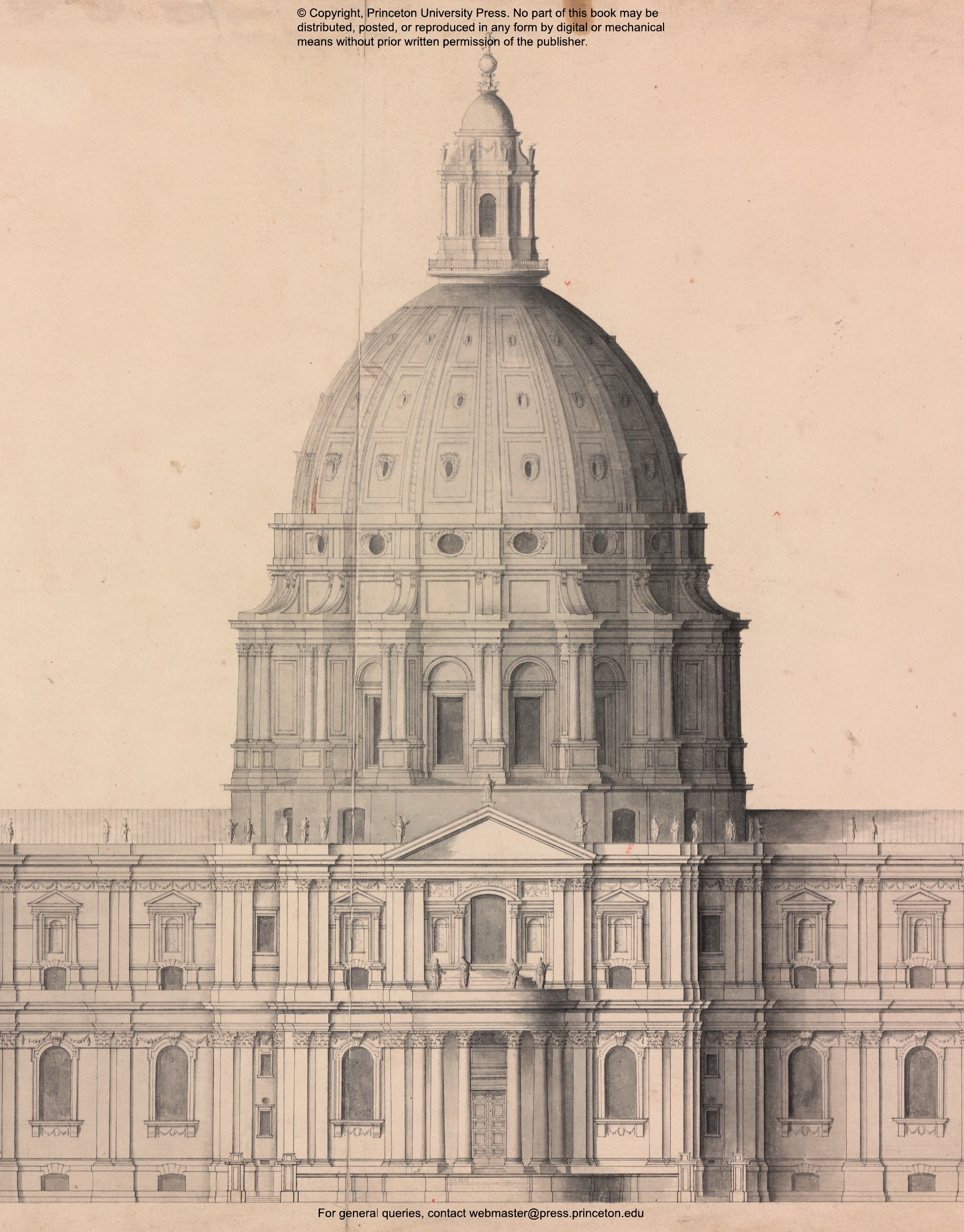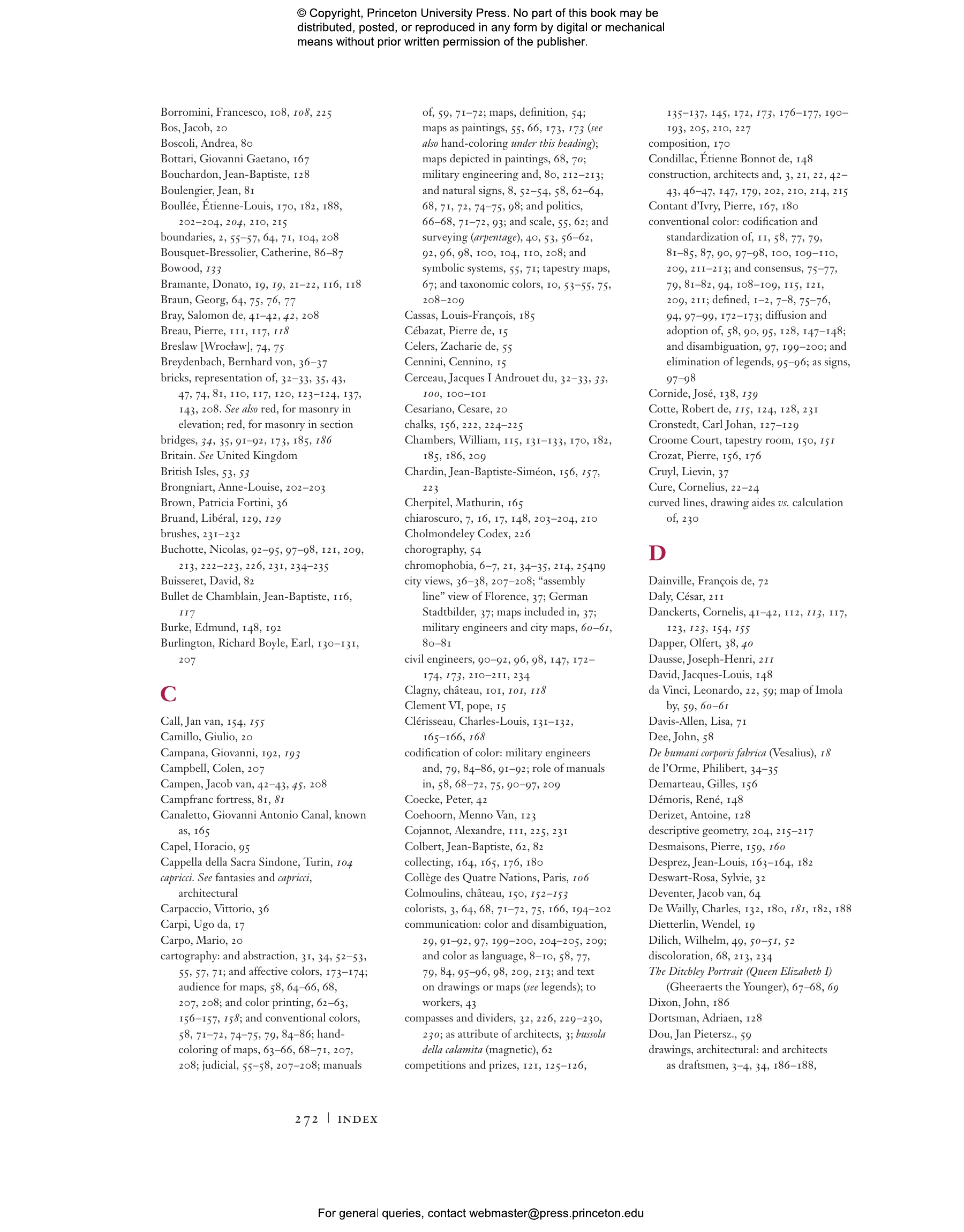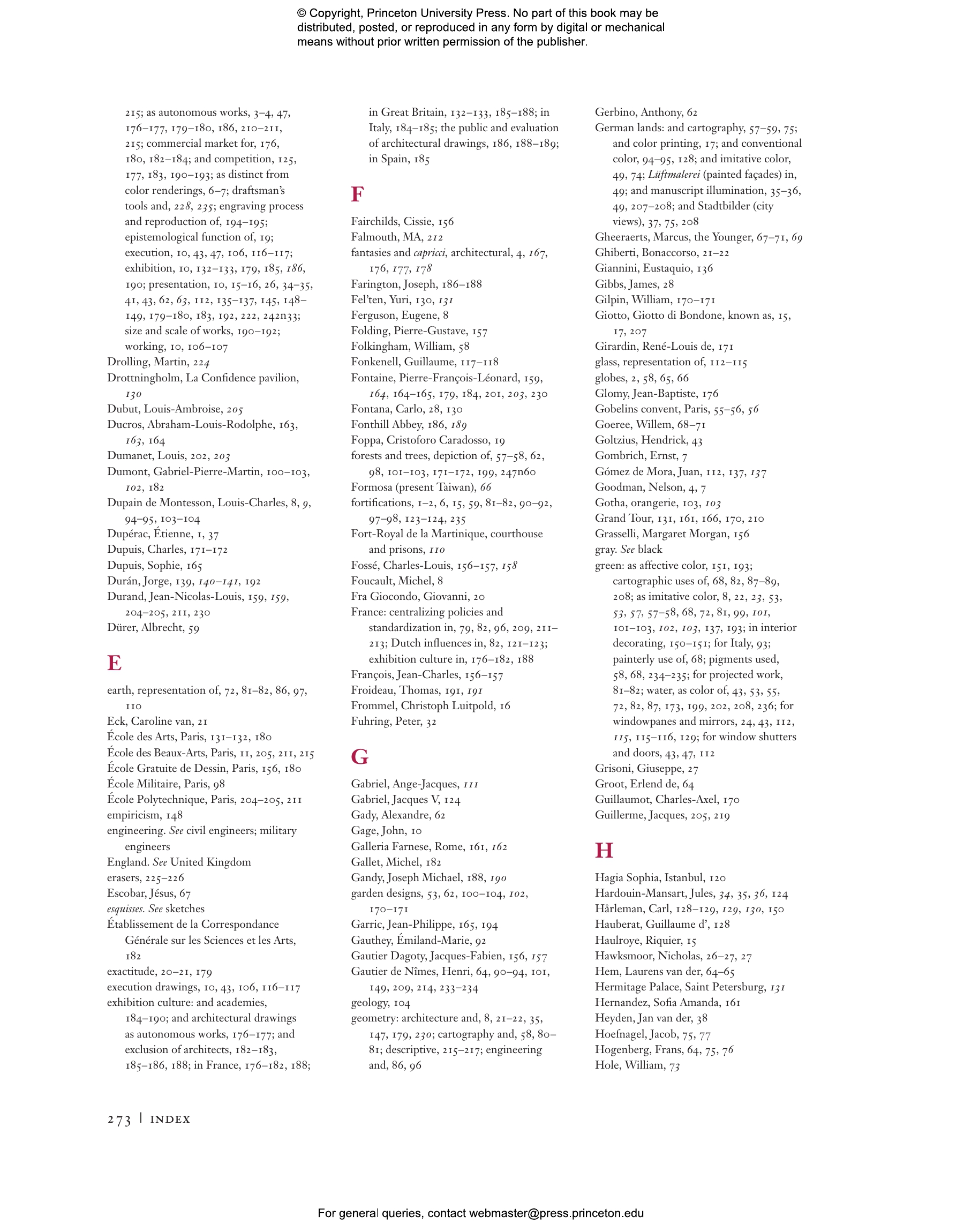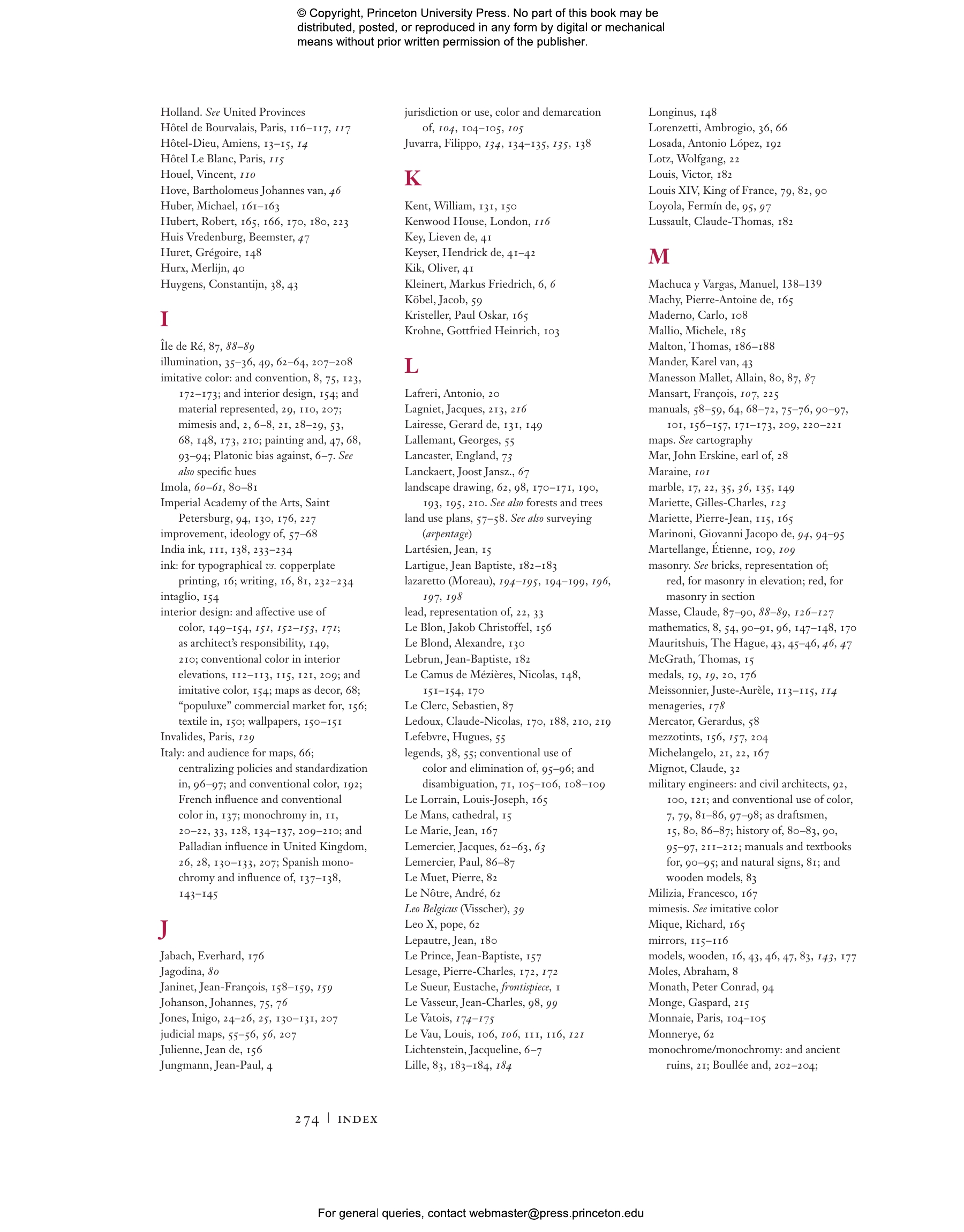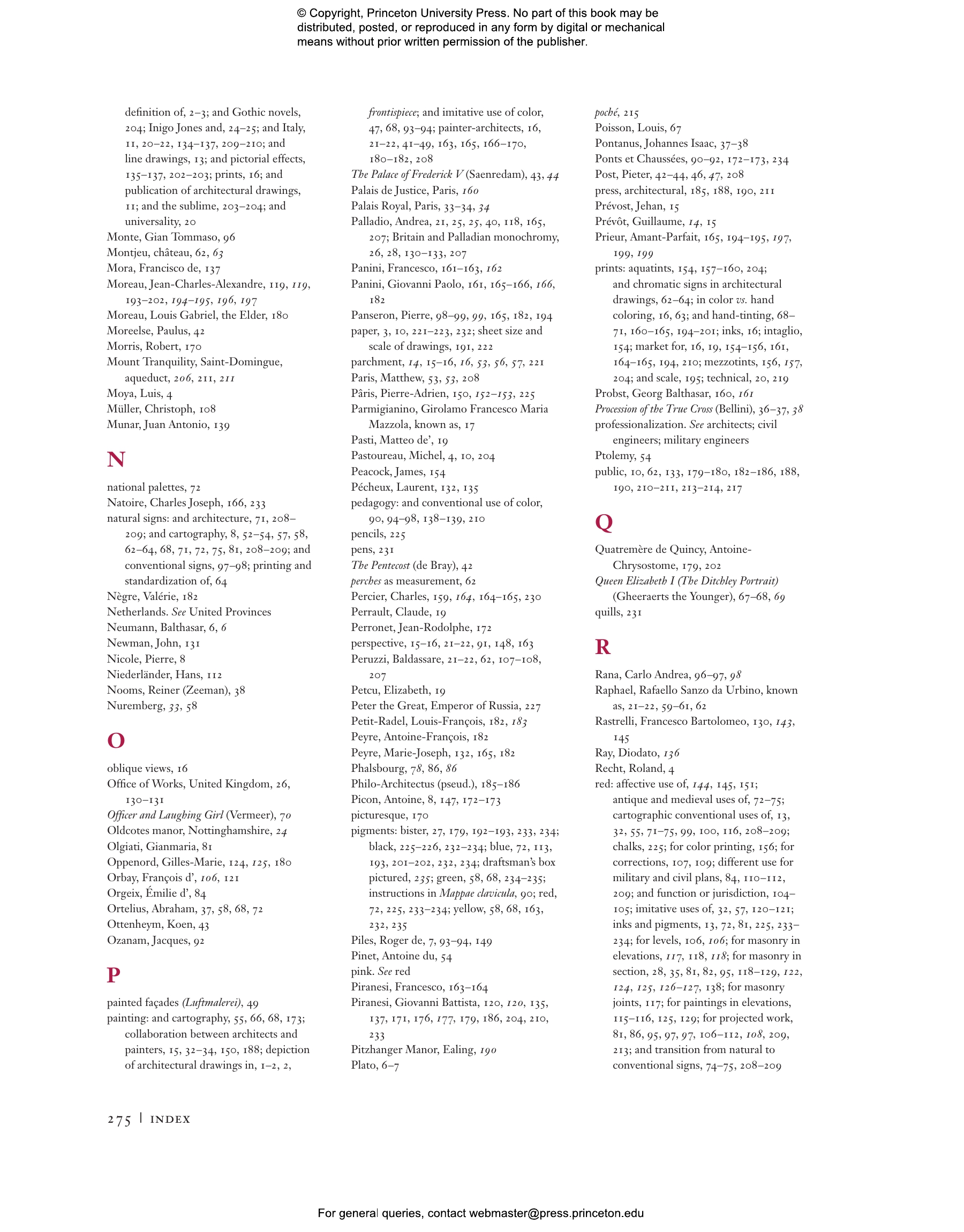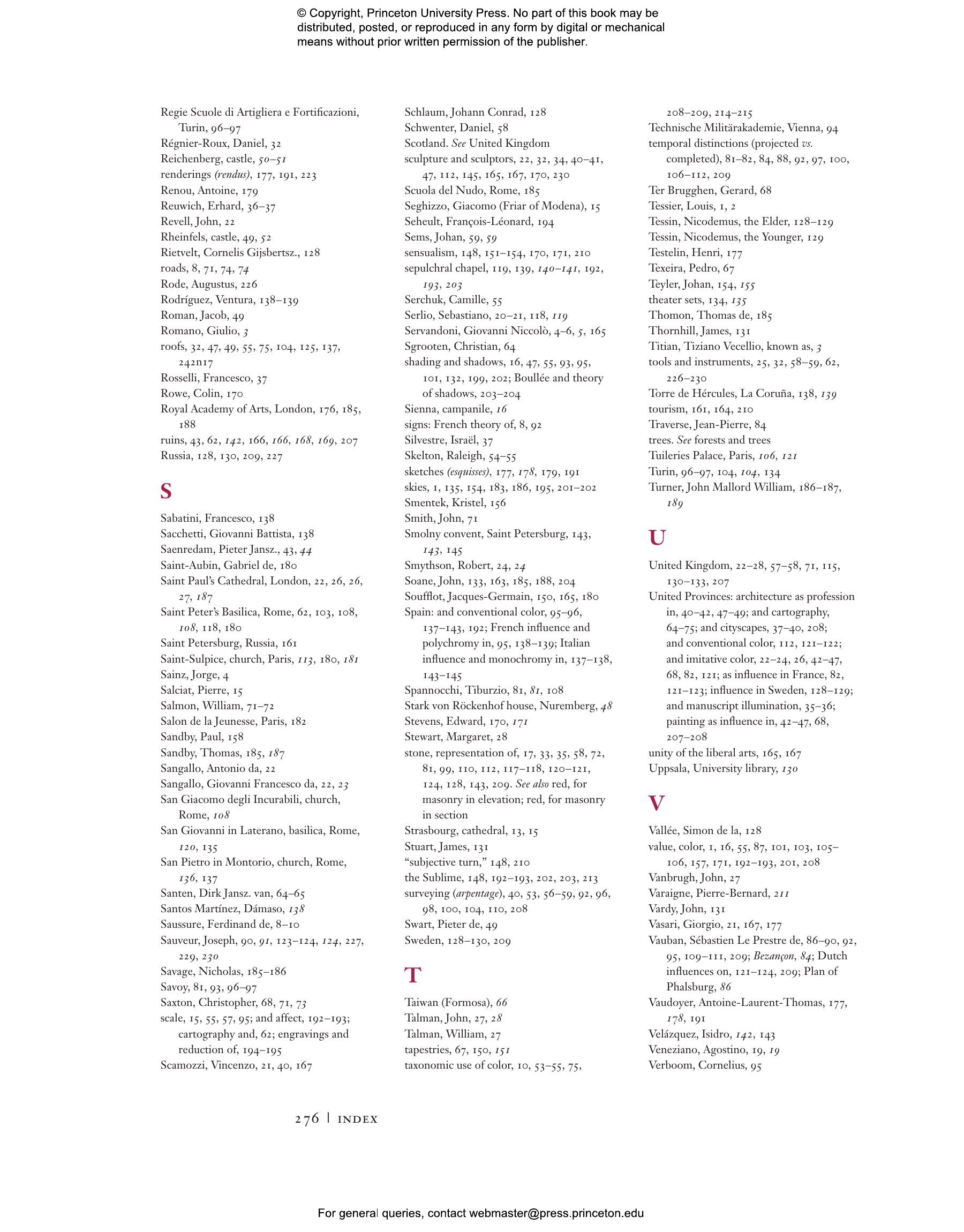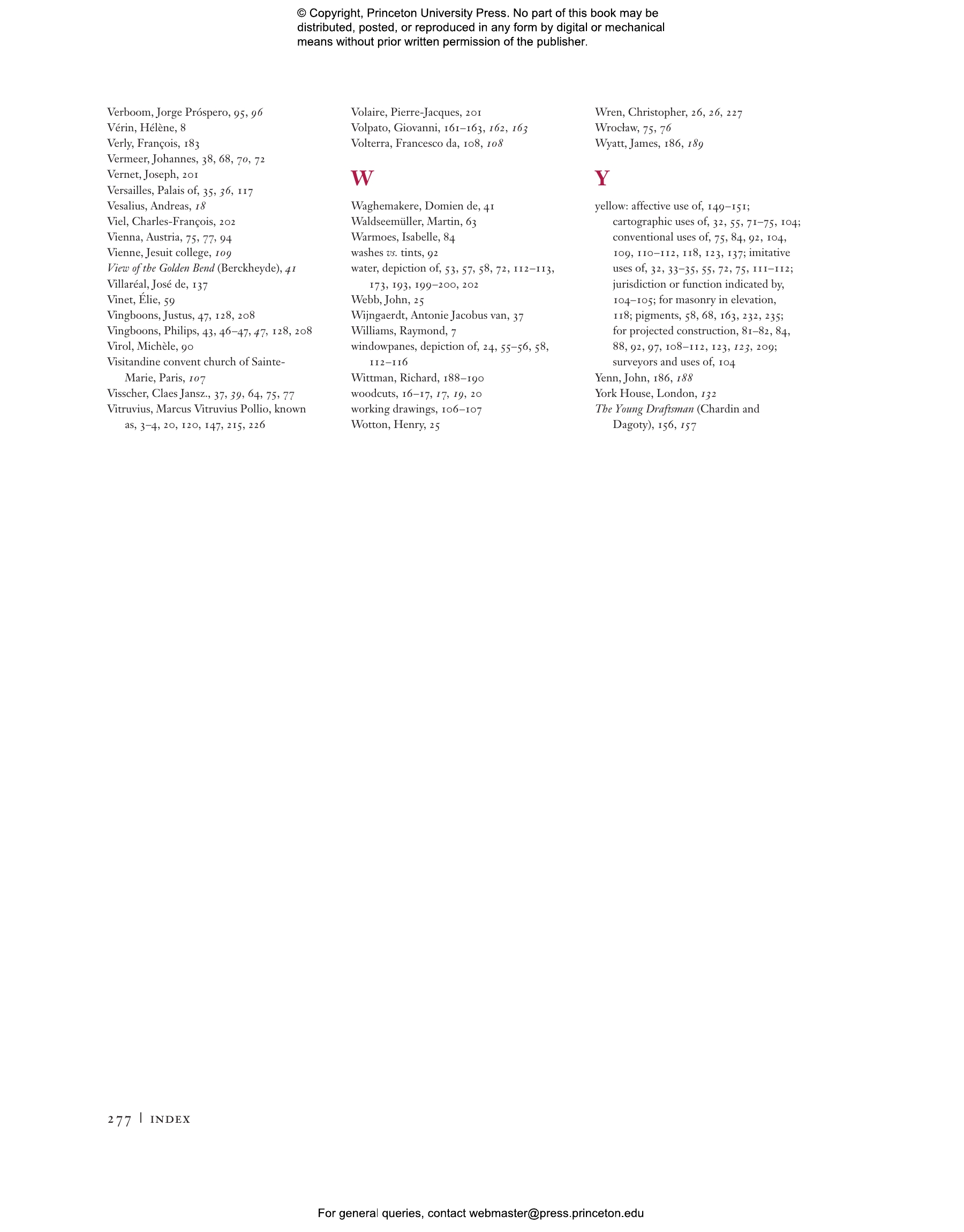Architectural drawings of the Italian Renaissance were largely devoid of color, but from the seventeenth century through the nineteenth, polychromy in architectural representation grew and flourished. Basile Baudez argues that colors appeared on paper when architects adapted the pictorial tools of imitation, cartographers’ natural signs, military engineers’ conventions, and, finally, painters’ affective goals in an attempt to communicate with a broad public.
Inessential Colors traces the use of color in European architectural drawings and prints, revealing how this phenomenon reflected the professional anxieties of an emerging professional practice that was simultaneously art and science. Traversing national borders, the book addresses color as a key player in the long history of rivalry and exchange between European traditions in architectural representation and practice.
Featuring a wealth of previously unpublished drawings, Inessential Colors challenges the long-standing misreading of architectural drawings as illustrations rather than representations, pointing instead to their inherent qualities as independent objects whose beauty paved the way for the visual system architects use today.
Awards and Recognition
- Winner of the Alice Davis Hitchcock Medallion, Society of Architectural Historians of Great Britain
"[Baudez’s] meticulous, methodical study will likely appeal more to scholars than to the general public, but no matter the audience, this extensively researched, richly illustrated book sheds new light on this overlooked aspect of architectural history and practice."—Lauren Moya Ford, Hyperallergic
"This richly illustrated, fascinating study of the nature of architectural drawing, and the conventions that have underlain it through time, is essential reading for those interested in buildings."—Benjamin Riley, New Criterion
"A splendidly illustrated and deeply researched monograph. . . . The extraordinary value of Baudez’s research and publication lies precisely in its vast range, the prolixity of its all-colour illustrations and archival references, that allow the reader to examine the evidence and parse the interpretations, and that opens up a historical examination of manual representation in an age when its overcoming by digital techniques has rendered it all but obsolete."—Anthony Vidler, Drawing Matter
"Basile Baudez offers a riveting reading of architectural representations. By considering them over a long period and a wide geographic terrain, he offers a clear and erudite synthesis. Remarkably high-quality, renewed illustrations support this elegant study."—Alexia Lebeurre, CAA Reviews
"A significant contribution to understanding the development of color drafting methodologies and their influences on architectural history."—Paul Emmons and Negar Goljan, Montreal Architectural Review
"[Inessential Colors] differs from previous publications on this subject, which tend to focus more on polychromy in representations of buildings already in existence. A chapter on the materials and tools of the architect or drafter add much to the content."—Choice
"In Inessential Colors, Basile Baudez argues that the colors in architectural drawings serve three purposes: to imitate the world, to act as conventional signs for building materials and functions, and to move and delight—to affect—the viewer. . . . For anyone interested in the history and technique of architectural drawings, Basile Baudez’s very readable and beautifully illustrated book, which includes a detailed appendix titled 'The Draftsman’s Tools,' is highly recommended."—Martin Olin, Journal of the Society of Architectural Historians
"This volume is a highly original and stimulating study of paper-based material culture. With an impressive sweep across forms, media, and cultural-geographic, boundaries, it does what we expect the best object-based scholarship to do. It helps us understand why an artifact of the past looks the way it does, and how that contributes to its meaning in its own society. . . . Inessential Colors’s strength lies in the novelty of its approach, the breadth of original works consulted, and the attentive examination of each one."—Claudia Funke, Papers of the Bibliographical Society of America
"The increasing complexity of building in combination with the urgent need to tackle the climate crisis challenges the traditional role of the architect as designer and asks us to reconsider what matters most in the built environment. At the same time, architecture today too exists in the maelstrom of digital images produced by humans and nonhumans alike sometimes at a considerable distance from actual buildings. Studies like Baudez’s book enrich this conversation by complicating our understanding of such omnipresent artifacts as colored representations of buildings, but also by reminding us that architecture and its image have always played multiple and sometimes contradictory roles."—Maarten Delbeke, H-Net Reviews
"This impressive, thought-provoking book focuses on early modern presentation drawings of buildings . . . [asking] what the use of colour, or the absence of it, can tell us about the way architects communicated with patrons and the public. Wide-ranging in its coverage . . . the author demonstrates an extraordinarily broad command of early modern architecture in its different national settings."—Simon Pepper, Architectural History
"This richly illustrated book is an important work of scholarship that brings to light a wealth of new material, both graphic and textual. Baudez's wide scope, careful use of primary sources, and grasp of the literature are truly impressive."—Merlijn Hurx, author of Architecture as Profession: The Origins of Architectural Practice in the Low Countries in the Fifteenth Century
"Inessential Colors raises awareness of architectural drawings to new heights with elegance, insight, and beauty."—Pierre de la Ruffinière du Prey, author of Hawksmoor's London Churches: Architecture and Theology
